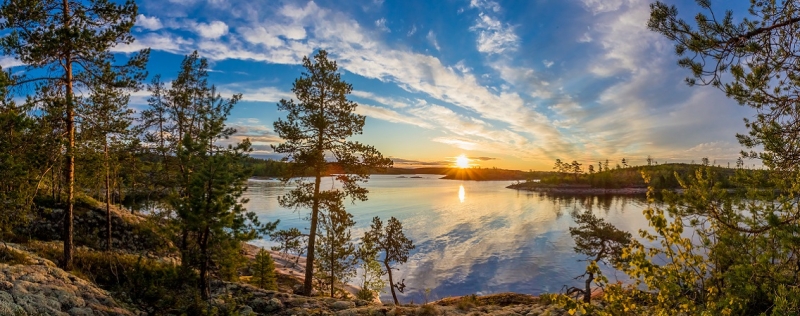
We can talk endlessly about the sights of Karelia: the wealth of local nature is so great and impressive that one place will be more picturesque than another. And it will be difficult to choose which place you liked best. And in between visiting locations, you will enjoy local hospitality and an original atmosphere that will be remembered for a long time as something very cozy and warm – despite the harsh landscapes around.
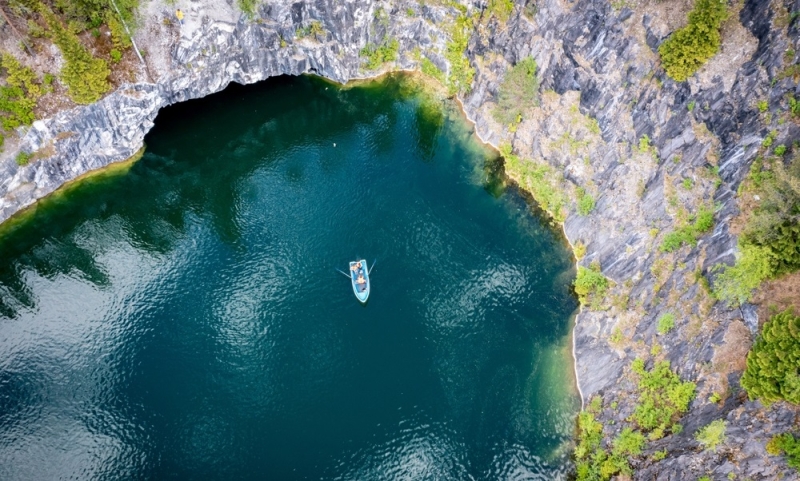
In our guide to Karelia you will find everything to organize the most unforgettable trip.
How to get there
The transport center of Karelia is Petrozavodsk, the capital of the republic. There is a railway station and an airport here.
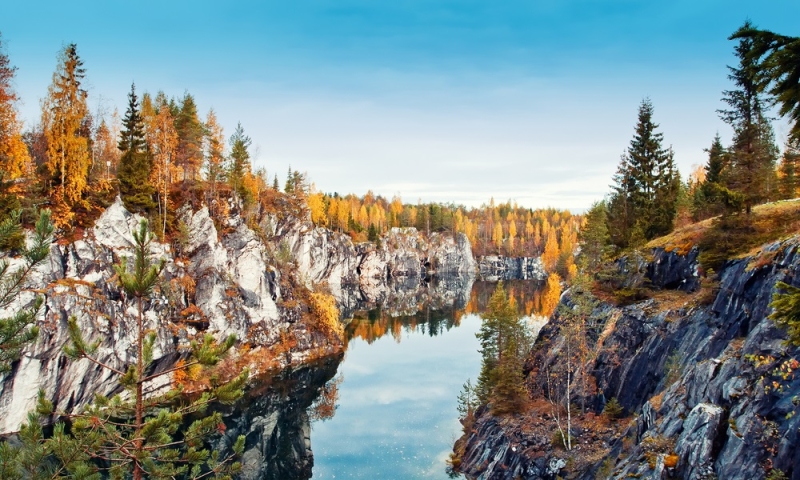
If you prefer to fly, an air ticket from Moscow will cost from 10,400 rubles roundtrip.
View flight tickets
Train tickets from Moscow start from 4,000 rubles round trip.
View train tickets from Moscow
You can get from St. Petersburg to the capital of Karelia by train. Ticket price – from 2,600 rubles in both directions.
View train tickets from St. Petersburg
Where to stay
There are many cozy hotels in the republic, which are conveniently located so as not to stay in one location. You can move around the entire region, stopping in different places. This way you will comfortably get acquainted with the many sights of Karelia.
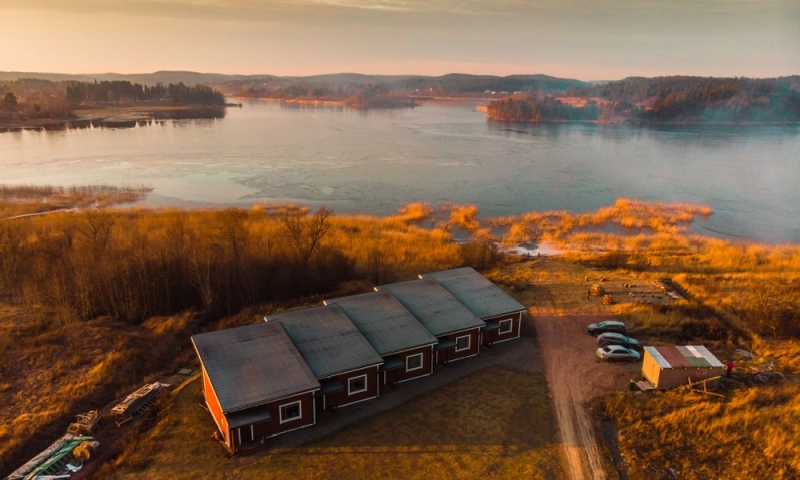
Start from the capital and stay at the Fregat Hotel. You will enjoy stylish and spacious rooms, as well as magnificent views of Lake Onega. The hotel is located in a green area right on its shore. A night for two will cost 5,500 rubles.
Book a room
In Sortavala there is a hotel “Point on the Map”, located deep in the Karelian forest, far from the bustle of the city. You will admire the northern landscapes while sitting in a comfortable chair: the windows of all rooms overlook the lake and forest. A day costs 7,700 rubles.
Book a room
Guest houses in the eco-village “Chunki” are a place where you will enjoy the real Karelian atmosphere and have a great night’s sleep. Fresh air, unique nature, a Russian bathhouse, spacious houses made of local pine – all the components of a northern holiday are here. You can book a house from 6,000 rubles.
Book a room
When to go
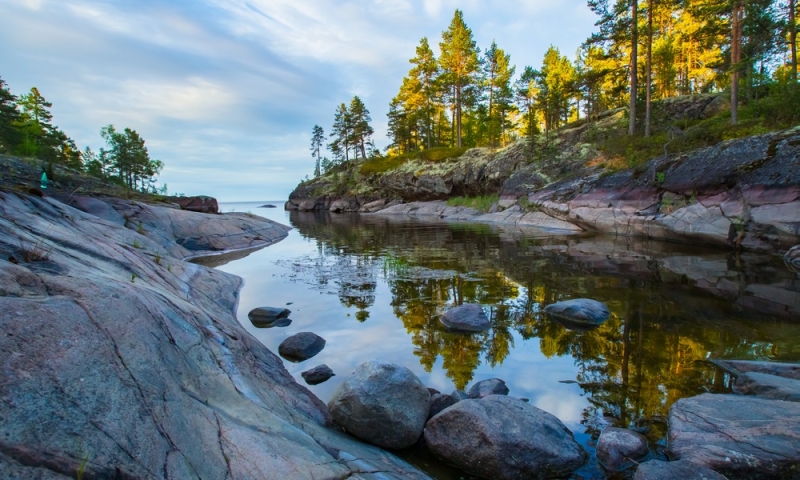
Karelia is beautiful at any time of the year, but each season has its own characteristics that are worth taking into account to make the trip comfortable and without surprises. The warm season, of course, is the most convenient for traveling to the sights, but if you go to the republic in the summer, be sure to take mosquito protection. And in the spring you will have to take rubber boots to protect yourself when meeting snakes in the Karelian forests. Also remember that during the high season – from May to September – many tourists travel to the region. You need to take care of tickets and hotels in advance.
For a winter tour of Karelia, it is worth considering that there is no navigation at this time. Tourists reach many national parks and reserves by helicopter or hovercraft. You will need to be well insulated and take appropriate equipment. But believe me, such preparation is worth what you see upon arrival. Northern winter landscapes are so fabulous that you will forget about all the inconveniences.
Karelian autumn also has its own charm: mosquitoes and midges no longer prevail, and September is the main month for picking berries – they become as juicy as possible. There is no need to talk about the red and yellow panoramas in the region with dense forests – they are magical. It’s especially great to visit ethnographic places in the golden autumn.
What to see in Karelia
We talk about Karelia – we imagine endless forests, huge lakes, numerous rivers, impressive waterfalls, but we forget that not only nature is beautiful in the region. The cities of the republic, for example, are interesting for their long history and places that still keep its secrets. And since the sights of Karelia are not limited to picturesque landscapes, we suggest taking this into account in your route.
Petrozavodsk
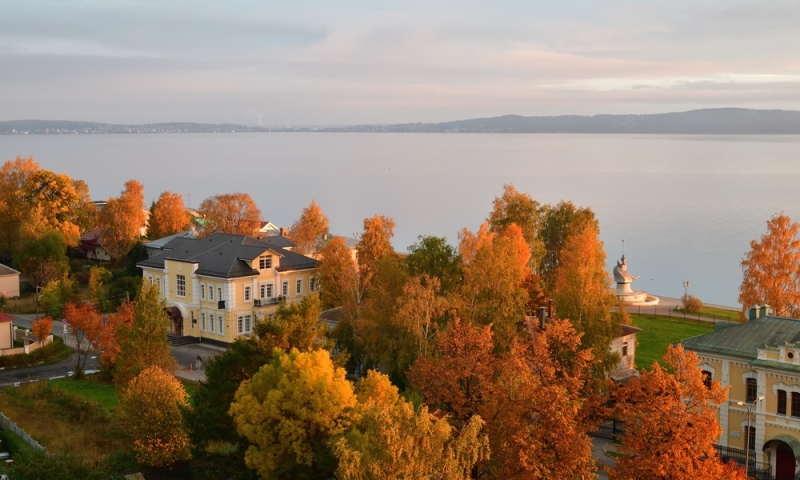
Once you find yourself in the capital of Karelia, you will be surprised by the cultural and architectural heritage, which can be studied in museums, pre-revolutionary houses and temples, as well as simply walking along the streets of the city. You can allocate several days for this. But if you visit Petrozavodsk for a short time – before going on a trip around the republic or on the way back – be sure to visit these places:
Onezhskaya Embankment
This is where your acquaintance with the city begins. Petrozavodsk was formed at the beginning of the 18th century as a small settlement, right on the shore of the lake. The embankment was developed much later, and now it has become the calling card of the capital. There are picturesque landscapes here, but visitors admire not only them. Onezhskaya embankment houses a large collection of monuments donated to Petrozavodsk by sister cities from Russia, Europe and the USA. Many of the sculptures are created in an avant-garde manner, making the place look like an open-air museum of modern art.
Museum of Fine Arts of the Republic of Karelia
And here you will understand why Karelia is also famous for its culture. The museum opened in 1960; the Tretyakov Gallery and the Hermitage helped collect art objects; now it is divided into several halls. There are many works by famous Russian painters here. You can look at paintings by Repin, Vasnetsov, Shishkin, Aivazovsky. The collection of ancient Russian icons is also impressive; some exhibits were painted during the reign of Ivan the Terrible. Guests take special interest in the main exhibition – it presents over 3,000 works created in Karelia itself. Thanks to this collection, you can get a closer look at local painting and sculpture, as well as the history of the development of art in this region. The museum’s collections also include works by foreign authors, for example, Jan van der Heyden and Michel van Coxie.
Botanical Garden of PetrSU
Its creation began in 1944 to conduct practical classes for students. After 7 years of fruitful work, hundreds of plant species appeared in the garden that would not be found in the Karelian climate. They did not limit themselves to scientific research and opened the garden to the general public, continuing to replenish it with unusual specimens. Today it reaches an area of 367 hectares and is filled with plants characteristic of Asia, North America, and Europe. And besides the greenhouses, there are two rather interesting locations. The first is the “Devil’s Chair” tract, ancient rocks that are at least 2 billion years old. The second is a modern analogue of the Sami stone labyrinths.
Sortavala
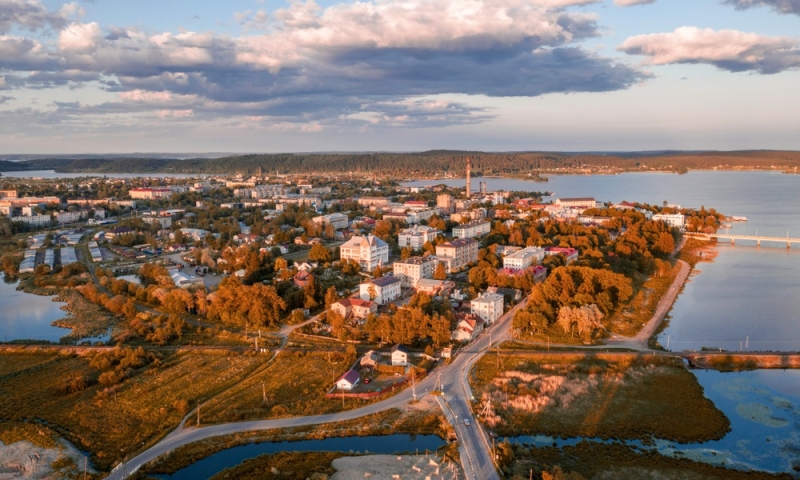
Until 1940, the city was part of Finland, thanks to which it preserved monuments of Finnish architecture built more than a hundred years ago. Almost every street in Sortavala is steeped in history, and there are beautiful views and places everywhere. Particularly interesting buildings are the Siitonen Merchants’ House, built in the Art Nouveau style, the United Bank of the Nordic Countries with a tiled roof and half-towers, the wooden Sortavala Town Hall and the Church of St. John the Evangelist, unusual for an Orthodox church. We also recommend setting aside time for the following locations:
Vakkosalmi City Park
One of the most beautiful places in the city with picturesque natural landscapes. It was founded 150 years ago by local intellectuals, and it still remains a favorite vacation spot for city residents. The main attraction for which people visit the park is Mount Kuhavuori. Its height is 64 meters, getting to the top is very easy. There you will enjoy the cleanest air and stunning views, and you will find several attractions. For example, this is where the ruins of a water tower and a sculpture of an angel are located.
Historical Park “Bastion”
An open-air museum that transports guests through different eras to explore numerous periods and events. However, you won’t be able to simply look at the exhibits. All of them are interactive: you need to touch them and try them in action. Surrounding locations await you; they reproduce as accurately as possible the historical appearance of their prototypes: from a medieval fortress to a military unit of the 20th century. You can also look at the weapons and life of the Vikings here. You will also take part in master classes that introduce you to crafts: you will feel like an ancient master and make your own memorable souvenir. You shouldn’t refuse excursions either, they are all fascinating, take place in a playful way and immerse you in a particular era.
There is never a dull moment in the park; entertaining performances, festivals and delicious dishes prepared according to ancient recipes are constantly held on the territory. You can even take part in a role-playing game and stay for a couple of days in cozy guest houses.
Ruskeala Mountain Park
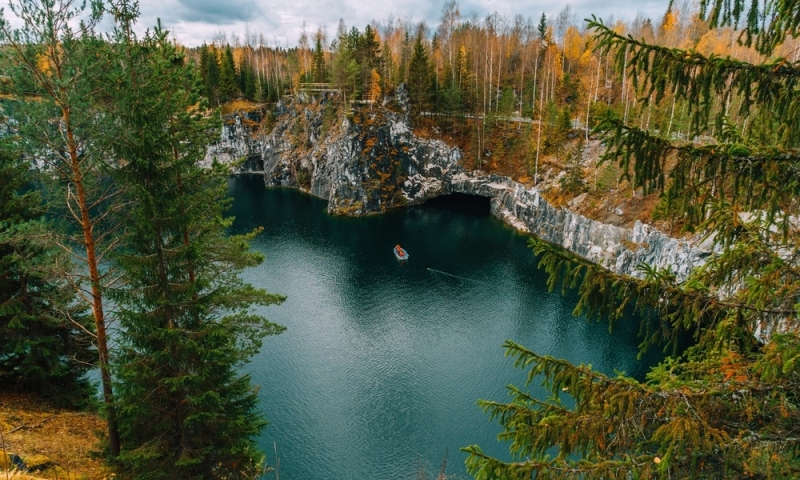
We recommend getting here from Sortavala. This can be done on a retro train, the interiors of which are made in the style of the Nikolaev Express, which transported passengers from St. Petersburg to Moscow more than a hundred years ago. You will be transported briefly to the beginning of the 20th century, and outside the window you will watch unforgettable landscapes.
Ticket for the retro train
It seems that the landscapes of the park cannot be duplicated by any other place in the world. And if you are planning to explore the natural attractions of Karelia, you should definitely visit it.
It all started in 1765, when marble began to be mined here. The Hermitage, St. Isaac’s Cathedral, Mikhailovsky Castle and other iconic architectural structures of Russia were built from it. Mining stopped, the quarry became deserted, and then gradually began to flood. Now it is a pool almost 500 meters long, and the water in it is so clear that you can see what is happening at great depths. The place has become even more beautiful than before the quarry appeared – another confirmation that cooperation between man and nature can be harmonious.
Here they walk through the remaining mine workings and look at the remains of kilns. The canyon itself consists of grottoes, caves and arches. Guests visit some of them on a guided tour; some can be seen during a boat trip. And if you like to scuba dive, you will be offered several diving options. Don’t want to swim? You can go down not only under the water, but also underground to walk through the mysterious labyrinths of adits to the Great Column Hall and the Underground Lake. The atmosphere will be complemented by dynamic lighting of marble walls and columns, as well as runic Karelian chants, piano sounds and acoustic effects.
Adrenaline seekers will enjoy the zipline over the quarry, rope jumping from rock cliffs and suspension bridges over waterfalls.
Kizhi Museum-Reserve
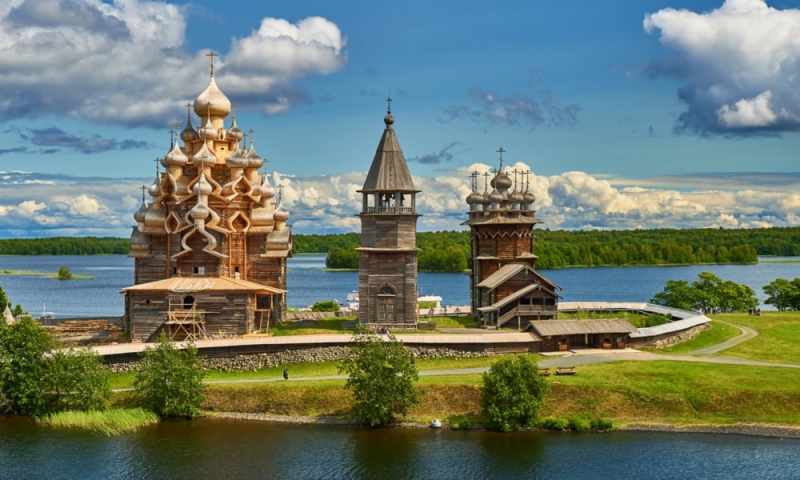
It is located on the island of the same name on Lake Onega and is recognized as one of the main attractions of Karelia. In the warm season, you can get here from Petrozavodsk by hydrofoil or with the help of local residents, who can take you to the museum by boat. During the cold season, when there is a storm on the lake or it is covered with ice, visitors to the island are transported to the island by hovercraft, snowmobile or all-terrain vehicle.
Architectural monuments of the 16th–19th centuries have been preserved here: churches, chapels, worship crosses, barns, mills, houses, workshops. Some of them were built on the island, others were brought from the corners of Karelia and restored. Each zone of the museum belongs to different centuries and regions of the republic. The most famous and remarkable building is the wooden Church of the Transfiguration of the Lord. Its frame was built without nails, and its 23 domes resemble onions and are covered with aspen shingles, which are made by hand.
You can simply walk around the island, taking in everything in its quiet and peaceful atmosphere. Or do the same on horses. And you can touch the history of Kizhi and the Russian north by getting acquainted with the traditional cuisine and crafts of the peoples of Karelia. They even carry out agricultural work here so that tourists can truly be transported back to past centuries. This is done in accordance with the seasons. Participants dress in traditional costumes and work with ancient tools.
Mount Vottovaara
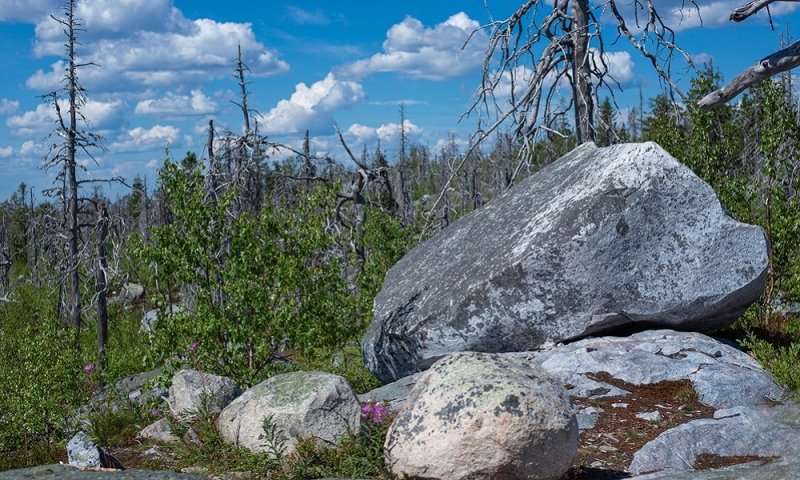
If you look at the sights of Karelia on the map, it turns out that they are scattered throughout the region. Mount Vottovaara, for example, is located in the Muezersky district, 20 km from the village of Sukkozero. This is a rock massif, on the plateau of which there are huge seid boulders on small stones – and they, in turn, are often placed on another boulder. There are about one and a half thousand such “structures” here. The researcher who discovered the seids suggested that the boulders served as a place of worship for the ancient Sami. Occult purpose is still the most common version of finding unusual compositions here. Because of this, not only archaeologists and tourists come to the mountain, but also people who tend to believe in mysticism and pseudo-scientific theories. Although scientists are still arguing whether these structures are man-made or not. The surrounding landscape also adds mystery to the place. The trees here have a bizarre, broken shape.
Valaam Island
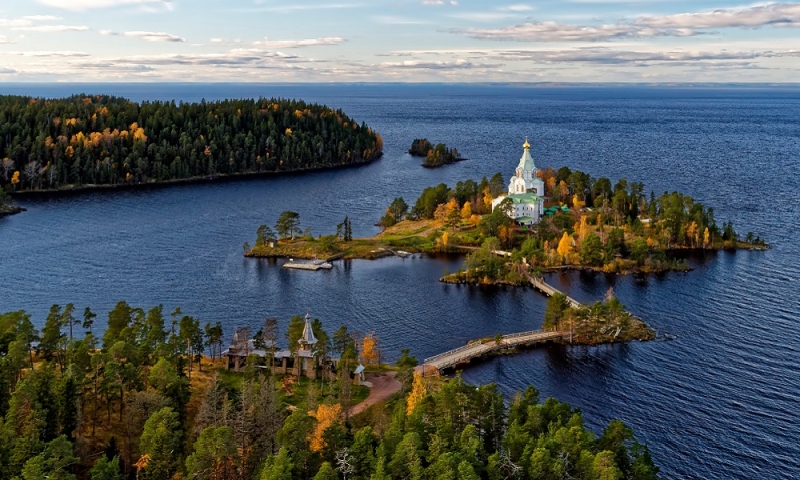
The Republic of Karelia is not only about natural attractions and riches. Almost all tourists who find themselves in the republic strive to visit the Valaam Monastery on the island of the same name. And some people go to it precisely for this place.
Valaam Island is located in the north of Lake Ladoga. The monastery was founded at the beginning of the 15th century. For a long time, civilization did not touch him, but as a result of the annexation of part of Finland to the USSR in 1940, he ended up on the territory of the Soviet Union. And thanks to restoration, already in this century the Valaam Monastery began to attract monks and tourists who appreciate Orthodox architecture. They present the main attractions of Valaam. You can’t visit everything, and you simply won’t have time to get to some of them if you come for one day – the island is very large.
On your own or as part of excursions, you will walk from monastery to monastery and enjoy the picturesque places. There are observation platforms here that offer wonderful views of Lake Ladoga, rocks, forests and neighboring islands. It is not for nothing that Valaam is associated with the names of outstanding writers, composers and artists. Tchaikovsky, Tyutchev, Kuindzhi and other artists were inspired here. You cannot escape this either – Valaam is truly very beautiful. But keep in mind that this is still a landmark of Karelia, visited in the summer. After all, you need to get to the island from the mainland.
Ladoga Skerries National Park
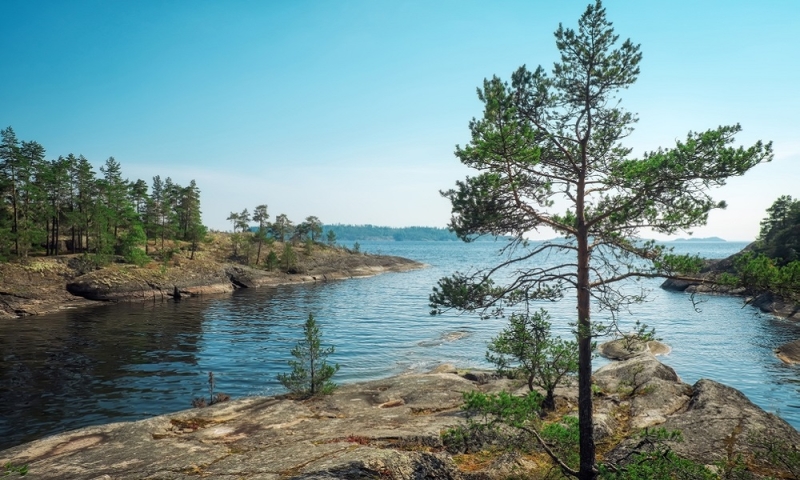
One of the most attractive places on Lake Ladoga on the northern and northwestern coast. Essentially, skerries are rocks; there are about 650 of them here and they form an entire archipelago. All this splendor arose here as a result of protruding glacial layers that were flooded with water.
The national park appeared in 2007 thanks to environmentalists, activists and local residents. The goal was to preserve rare species of animals and plants, as well as a unique specific microclimate. In the summer, tourists explore the Ladoga skerries on kayaks and fish, because the lake is home to more than 50 species of fish: trout, salmon, bream, pike perch, catfish, burbot and many others. And those who are planning to explore the sights of Karelia in winter will also find it interesting here. The lake, of course, freezes, and this has its advantages. Skiing trips are becoming relevant, the rocks themselves are beginning to resemble Norwegian fjords.
The largest islands of the Ladoga skerries: Kilpola, Putsari, Kukhka, Lauvatsari and Sorolansari. Impressive objects to explore are the “Ram’s Foreheads” – rounded ledges located close to each other, and the “Reef Mountains” – rocky cliffs.
Ski resort “Yalgora”
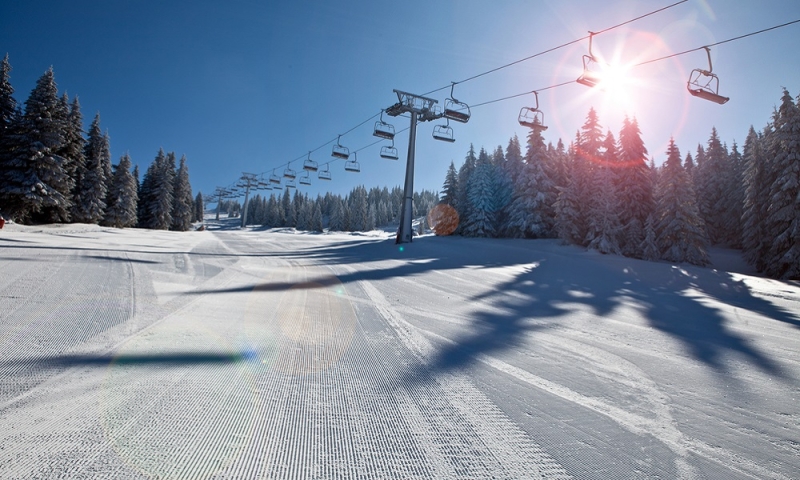
It is located only 15 km from Petrozavodsk, so getting there will not be difficult. Especially if you decide to tour the sights of Karelia by car. In winter, there are training and main slopes here, there are trails of all difficulty levels, a cross-country skiing area, a snow park, a biathlon complex, a freestyle center, and jumps. Those who are not into sports also like it here. The resort is located on the shore of Lake Onega Bay, surrounded by fluffy pines and spruce trees – you will walk through very picturesque places. They also look amazing in summer, and since Yalgora is open all year round, you can visit it in any season.
In your free time from walking and skiing, take part in master classes, go to the bathhouse and sauna, and relax in the barbecue area. There are accommodation options, restaurants and bars, so you can spend a full vacation at the resort, periodically traveling to places of interest to you in the republic.
Sanatorium “Marcial Waters”
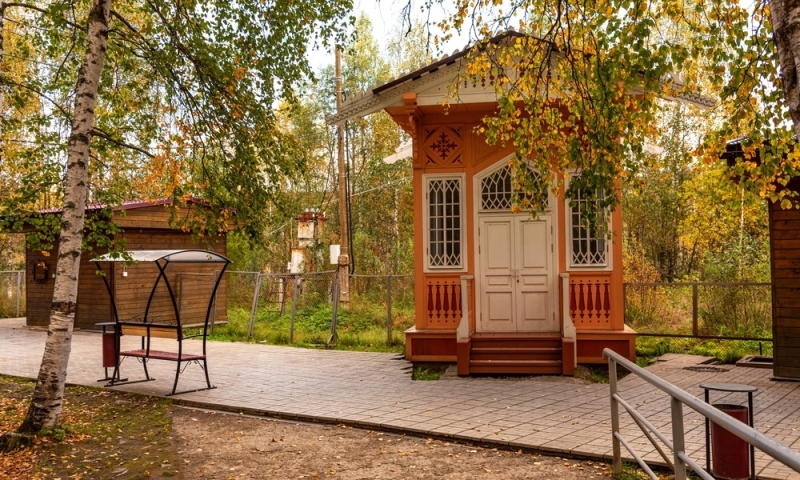
This medical resort is historical. It is the first in Russia, and it was founded by Peter I. Since the 18th century, they have been practicing balneo and mud therapy using the mud of Lake Gabozero. People with diseases of the blood, digestive, respiratory, musculoskeletal, cardiovascular and other body systems come here. In addition, vacationers are offered various services for caring for the body, hands, face, hair, relaxation in a Russian steam room or Finnish sauna, massage and wraps, wellness programs for weight loss and stress relief. If you come here with children, a teacher will be able to take care of them during the day, and the resort will offer tubing, skiing, board games and a game room for entertainment.
A museum-reserve has also been opened here, in which tourists are imbued with the Peter the Great era. Some exhibits were made by the king himself. Interesting objects are the house-museum of 1839, in which the caretaker used to live, the 19th-century pavilion over the former mineral water source, and the 18th-century Church of the Apostle Peter. Here you will take unusual photographs of authentic buildings against the backdrop of unique Karelian nature.
Kinerma Village
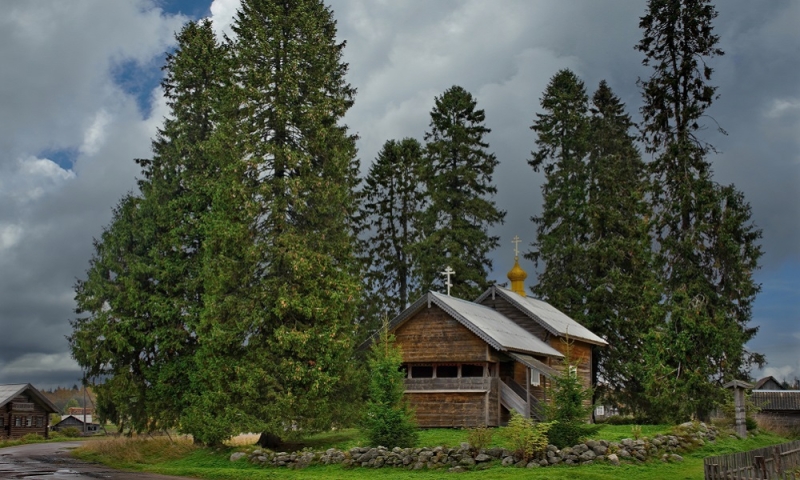
It is called the most beautiful northern village, and it is not exactly a museum, it is really residential, but at the same time it has the status of a complex historical monument. This is a wonderful example of folk wooden architecture, preserving the spirit of an ancient settlement and rural life of Karelia.
The excursions are conducted by the local residents themselves – there are not many of them here, but they all care about the safety and prosperity of their native village. There are 16 houses in total, 8 of them are architectural monuments and are protected as an object of cultural heritage of the Republic of Karelia.
The ancient buildings are built in the shape of a circle, the houses remain completely traditional with original external decor, barns and stables. Non-residential buildings are also interesting. For example, a local bathhouse, which is still heated in black, a chapel built in the center of the settlement, a well with unique patterns and carvings.
On the territory of the village there are guest houses with a stove – they will be a comfortable place to stay overnight, as well as a dining room for tourists with dishes of national cuisine.
Where to eat
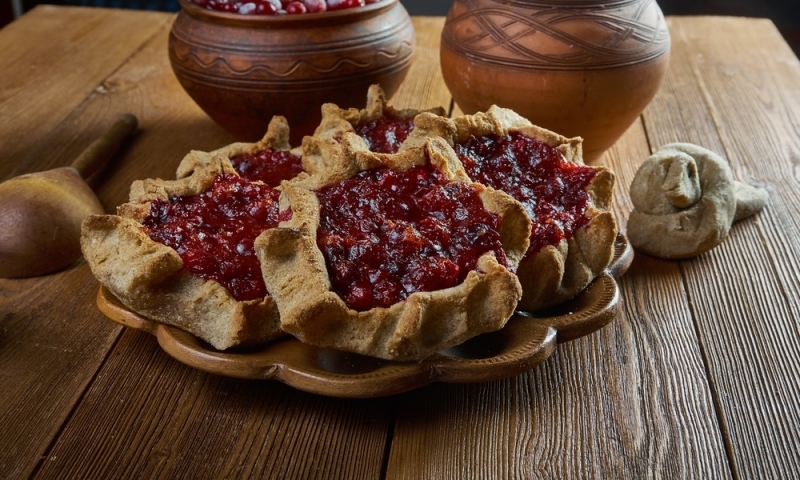
In Karelia – a harsh land of lakes, rivers and forests – local cuisine has its own national flavor. To fully experience the atmosphere of the region, you definitely need to try it. The dishes incorporate the traditions of Finnish and Estonian cuisine, Vepsians and other nationalities. Here, as a rule, fish, venison, elk or bear meat are prepared, porcini mushrooms, aspen and boletus mushrooms are used, as well as a variety of berries: lingonberries, blueberries, blueberries, cloudberries, cranberries. We’ll tell you where you can try all this.
Restaurant “Karelian Gornitsa” – a restaurant of Karelian cuisine with a truly national flavor. Here you will not just try traditional dishes, but will do it to folk tunes performed by local ensembles. You will also get acquainted with folk crafts.
Address: Petrozavodsk, st. Engelsa, house 13.
Cafe “Priladozhye”
The blue Finnish house and gazebos on the shore of Lake Ladoga are a cozy place with garlands. The fish here comes from a trout farm, which is located right there. National dishes promise to be fresh and tasty, and the hospitality will definitely please you.
Address: Rautalahti village, st. Central, house 84.
Restaurant “Gustav Winter”
It is located on Ladoga and it has its own pier – you can stop by for dinner while walking along the skerries. Near the panoramic windows or on the terrace you will be treated to traditional Karelian cuisine with a modern interpretation. Seasonally, the menu focuses on local gastronomic specialties: mushrooms, berries, fish and game.
Address: Sortavala, Tarulinna village.
What to bring
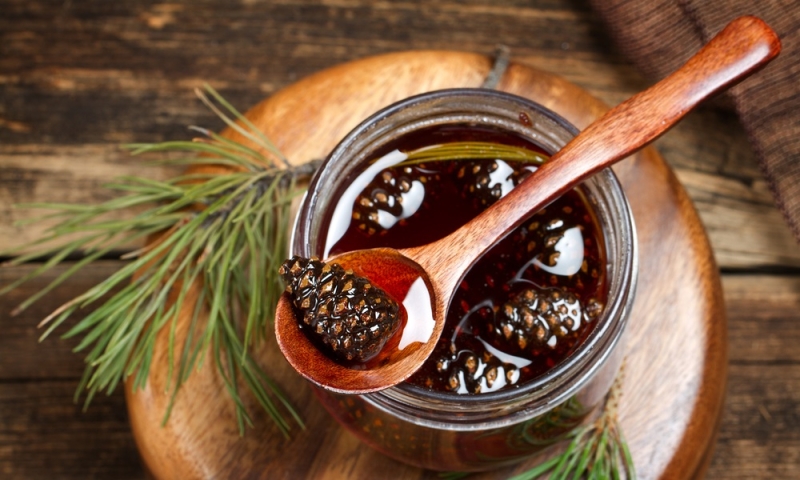
Shungite souvenirs
The deposit of this unique stone is found only in Karelia, so products made from it are not just a gift, but a national treasure. It is believed that shungite has unique bactericidal properties, purifies water, neutralizes electromagnetic radiation and helps with diseases.
Zaonezh embroidery and patchwork
Eco-style does not go out of fashion, so linen tablecloths, towels, bedspreads, potholders with traditional embroidered red patterns will be an appropriate gift. Blankets, pillows and even bags made using the patchwork technique will also become quite original souvenirs.
Northern ceramics
Ceramics are made in an unusual way in Karelia. For this purpose, special red clay is used. And the Nordic influence is felt in the painting: it is very restrained, has delicate pastel colors without bright transitions. The assortment of ceramics includes figurines, mugs, plates, jugs and much more.
Karelian balms and tinctures
Locals call them the elixir of life. With the help of these herbal and berry drinks you can get rid of many diseases and simply maintain the health of the body. It is especially useful to drink them in the cold season: they both warm and heal. The most useful balms contain up to 30 different ingredients.
Northern berry jam
It tastes amazing, and we can talk about the benefits for a very long time: there is an incredible amount of minerals and vitamins in the delicacy. Also, jam made from northern forest berries is always fragrant and aromatic. More classic options include cranberry, lingonberry, and blueberry. If you want something exotic, choose mint or cloudberry pine cone jam.
Conclusion
We hope our guide to Karelia will help you organize the perfect trip, thanks to which you will fall in love with the north and bring with you many new impressions. You can always book tickets and hotels online at competitive prices in the OneTwoTrip app or website. There you will also find car rentals and excursions to make your trip around the republic even more interesting.

